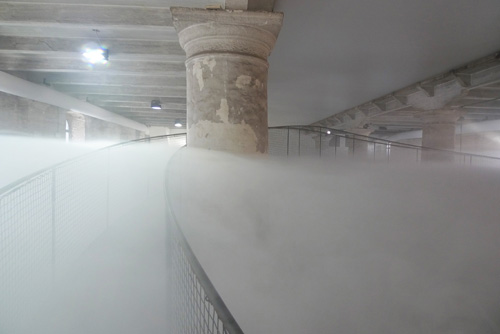'Usus/Useres' exhibit, Giardini Venice, 2010 Architecture Biennale
The Uses/Useres exhibit explores the wearing down of Architecture from the standpoint
of those who take an interest in building materials. This collection of Architectural parts presented like a Minimalist Art show. Comprised of old building fragments such as worn wooden treads, stained carpets and desktops removed from their original context, these inanimate objects took on a life of their own, through the expression and trace of human usage. This exhibition was a highlight of the Giardini Biennale. The analysis of wear quietly but convincingly made the point that Architecture is accountable for the ecological and social consequences that lie in its wake.







































